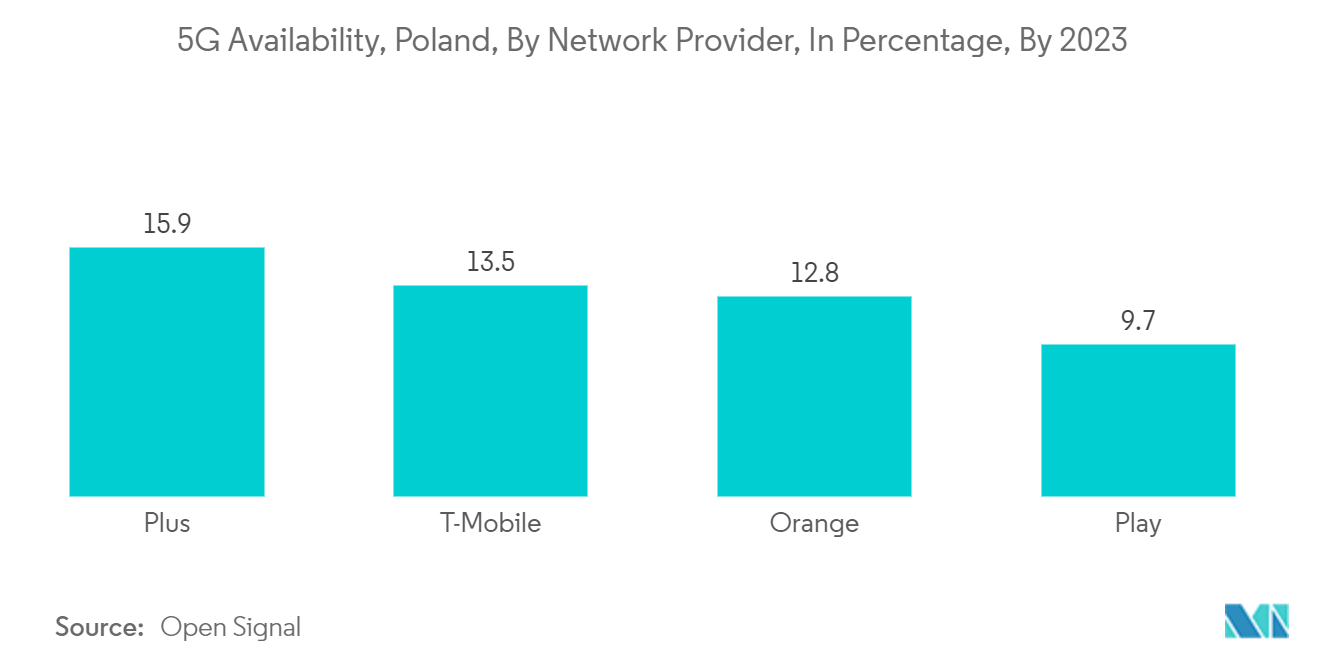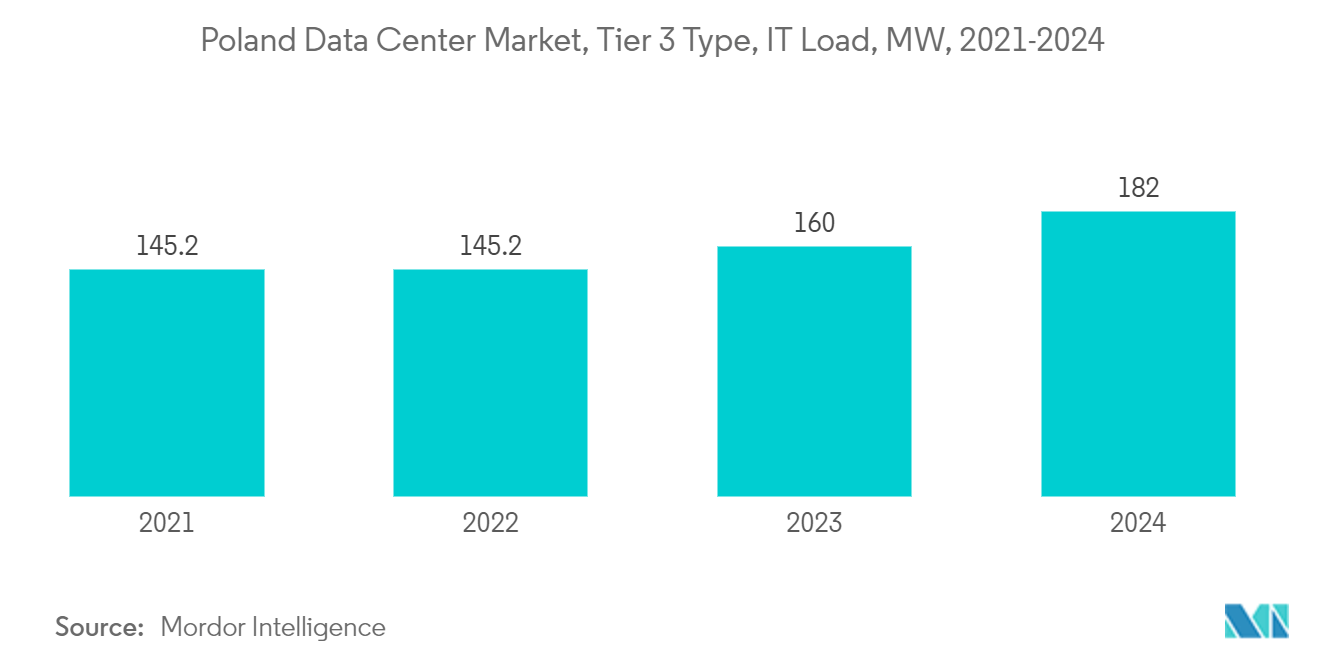Market Trends of Poland Data Center Construction Industry
IT and Telecom to Register a Significant Market Share
- By 2029, the market share for cloud services as an end user is projected to rise to approximately 24%, up from 23.12% in 2022. In 2022, the cloud category operated at an IT load capacity of 39.28 MW. This capacity is set to grow, reaching 47.15 MW in 2023 and a substantial 125.46 MW by 2029, marking a notable CAGR of 17.7%. Cloud infrastructure has proven effective, reducing companies' downtime by 57% and data breaches by 26%.
- Online shopping events have seen a significant uptick in website traffic, often overwhelming company servers and causing website crashes. However, companies that have embraced cloud services find themselves better equipped to handle these traffic spikes, ensuring smooth operations, especially during monetary transactions.
- The retail sector is emerging as a frontrunner in cloud service adoption, with projections indicating an annual value of USD 2.3 billion by 2030. Furthermore, as the retail sector in Poland embraces cloud technology infrastructure, it is poised to contribute 3.3% to the country's GDP by 2030. These trends underscore this sector's escalating demand for data center server computational power.
- In terms of telecom, since the commercial debut of 5G in 2020, operators have prioritized expanding 5G coverage and enhancing package offerings. Notably, all major national players, such as Orange, Play, Plus, and T-Mobile, have rolled out their 5G services. In a significant move, Operator Plus Poland unveiled '5G Ultra' in June 2023, a gigabit 5G service leveraging spectrum aggregation. Back in 2021, T-Mobile Poland boasted a 25% 5G coverage across the nation.
- With 4G now offering speeds of up to 44 Mbps, mobile data consumption has surged to 13.1 GB per month. Forecasts suggest this figure will climb from 14.6 GB in 2023 to a projected 26.7 GB by 2029. This growth is being fueled by the rising popularity of cashless payments, online banking, streaming services, and e-commerce.
- Such instances in the market may create more need for data in the coming years. This surge in data storage demand is poised to elevate the need for data centers in the region, thereby bolstering the prospects of data center construction firms in the coming years.

Tier 3 is Expected to Hold a Major Share of the Market Studied
- In 2023, the country boasted nearly 25 tier 3-compliant facilities, each capable of handling an IT load of up to 160 MW. The demand for tier 3 data centers is primarily fueled by their reliability and affordability. Projections indicate this demand is set to surge, with a CAGR of approximately 11.6%, pushing the total capacity to over 340 MW by 2030.
- Most data center facilities in the region cater to small, medium, and large enterprises. Out of the 25 facilities, 11 are concentrated in Warsaw, the nation's economic hub and a leading hotspot for data centers.
- Furthermore, more than five data center facilities are under construction, with tier 3 standards expected to come during the study period. Major players involved in tier 3 DC construction are EdgeConnex, LIMDC, and Data4. Construction is projected to be concentrated in Warsaw.
- In May 2023, Data4, a prominent European data center operator, unveiled its latest venture, a new data center campus situated just outside Warsaw, Poland. Upon completion, this sprawling campus, spanning four hectares, will boast a capacity of 60 MW and encompass 15,000 sq. m, spread across four distinct buildings.
- The rise of smart cities and connected networks is driving the demand for tier 3 data centers. In a recent move, Tychy in Poland rolled out an advanced Intelligent Transport System (ITS) to bolster its real-time traffic monitoring capabilities. As these smart initiatives generate vast data streams, the need for tier 3 and tier 4 data centers, known for their heightened reliability and uptime, is set to surge in tandem.
- Such instances in the Polish market are expected to drive demand for tier 3-certified facilities. This surge in demand, specifically from the tier 3 segment, is expected to bolster the need for data center construction services in the future.


